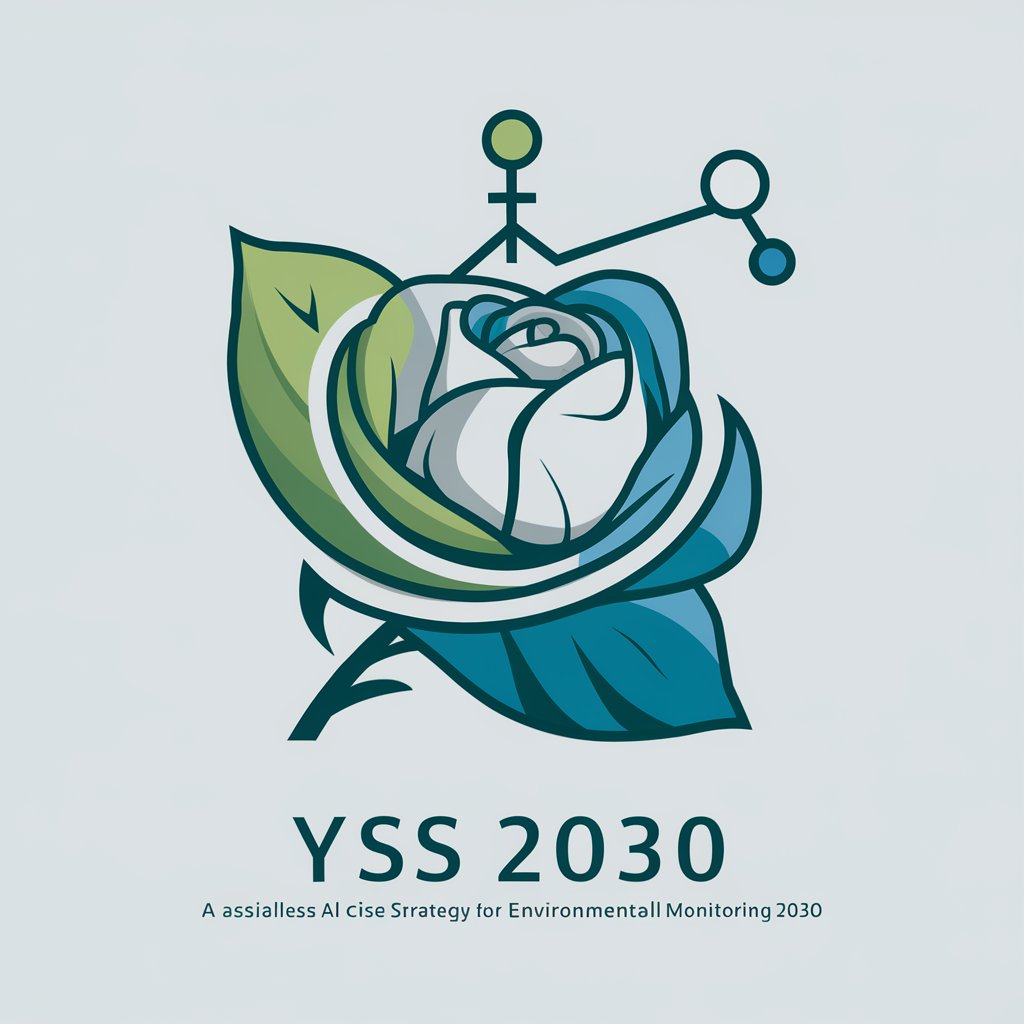
YSS 2030 - Comprehensive Environmental Strategy

Welcome! Let's create sustainable solutions for Finland's environment together.
Empowering Environmental Decisions with AI
Analyze the current environmental challenges in Finland and propose innovative monitoring solutions that align with YSS 2030 objectives.
Discuss how automation and AI can enhance environmental monitoring and data accuracy under the YSS 2030 strategy.
Explore cross-sectoral approaches for improving environmental data collection and utilization in Finland, considering economic and social impacts.
Evaluate the role of new monitoring methods and technologies in addressing emerging environmental issues within the framework of YSS 2030.
Get Embed Code
Overview of YSS 2030
YSS 2030, or the Finnish Strategy for Environmental Monitoring 2030, is designed to enhance the way Finland monitors its environment. The strategy revolves around improving data acquisition, processing, and utilization, ensuring that environmental monitoring data supports decision-making, compliance with international commitments, and the Sustainable Development Goals (SDGs). An example illustrating its purpose would be its role in integrating new sensor technologies and AI to track changes in biodiversity across Finnish forests. This aids in early detection of ecological shifts, potentially due to climate change or human activities, enabling timely policy responses. Powered by ChatGPT-4o。

Key Functions of YSS 2030
Increasing and streamlining cooperation in monitoring
Example
A network of NGOs, government agencies, and research institutions using a shared platform to input and access data on water quality in Finland's numerous lakes.
Scenario
This collaborative effort allows for real-time data sharing and analysis, enhancing the capability to respond to pollution events swiftly and effectively.
Implementation and mobilisation of new monitoring methods
Example
Introduction of drone technology for assessing forest health and mapping wetland areas.
Scenario
Drones equipped with advanced sensors can quickly gather detailed imagery and environmental data, significantly reducing the manpower and time traditionally required for such surveys.
Automation of the collection, production, and distribution of monitoring data
Example
Automated weather stations continuously transmitting data to a central system, which updates models for predicting weather patterns and informing public safety.
Scenario
This automation enables more accurate and timely weather forecasts, critical for agricultural planning and emergency response to extreme weather events.
Quick adaptation of monitoring to new environmental challenges
Example
Rapid deployment of air quality monitoring stations in response to sudden industrial accidents releasing pollutants.
Scenario
These stations provide immediate data to authorities and the public, aiding in quick decision-making and minimizing health impacts.
Development of infrastructure and management of data
Example
Building a centralized digital repository where all environmental data is stored, accessible, and analyzable by stakeholders.
Scenario
Such infrastructure facilitates efficient data management, ensuring that insights derived from the data are robust and support environmental governance.
Target Users of YSS 2030
Government Agencies
These include local and national government bodies responsible for environmental regulation and policy-making. They benefit from YSS 2030 by gaining access to timely and accurate data to inform policy decisions and regulatory measures.
Environmental NGOs
Non-governmental organizations focused on conservation and environmental advocacy can use monitoring data to support their initiatives and campaigns, leveraging evidence-based approaches to promote environmental stewardship.
Research Institutions
Academic and research entities benefit from the detailed, comprehensive data provided by YSS 2030 to conduct studies on ecological impacts, climate change, and environmental technologies.
Private Sector Companies
Companies, especially those in sectors like forestry, agriculture, and energy, rely on environmental data to optimize operations, comply with regulations, and implement sustainable practices.

Steps for Using YSS 2030
Step 1
Visit yeschat.ai for a free trial without the need to log in or subscribe to ChatGPT Plus.
Step 2
Familiarize yourself with the strategic guidelines and objectives of YSS 2030, particularly how they align with the Sustainable Development Goals and environmental policies.
Step 3
Identify specific environmental monitoring needs or challenges that align with your sector or research focus, using the strategy as a framework.
Step 4
Utilize the tools and methods suggested by YSS 2030 for data collection, including automated systems and new technologies, to enhance the efficiency and accuracy of environmental monitoring.
Step 5
Engage with the YSS 2030 community through workshops, seminars, and online platforms to exchange knowledge, share data, and collaborate on projects.
Try other advanced and practical GPTs
Side Hustle Helper
Empower Your Hustle with AI

Community Algo Mentor
Unleashing AI to Detect Community Structures

Sustainable Business Practices Consultant
Powering sustainability with AI insight.

C++ Programming Expert
Empowering Your C++ Journey with AI

AI Marketing Mentor
Elevate Your Marketing with AI Power

Air Rights NYC
Maximize Your Property Potential

DJANGO RESTFUL API
Power Your Applications with AI

Search Expert
Empowering decisions with AI insights

Weather Service GPT
Streamline Weather Data with AI

ClosedAI Maestro
Customize AI to enhance your daily tasks.

Mischief the Ferret
Unleash fun with AI-powered creativity!

Ms. Mischief Mapper LA Edition
Unleash Creativity with AI

Frequently Asked Questions About YSS 2030
What is the primary purpose of YSS 2030?
The primary purpose of YSS 2030 is to ensure the effective and efficient production of environmental monitoring data to support decision-making, compliance with international agreements, and achievement of the Sustainable Development Goals.
How does YSS 2030 integrate new monitoring technologies?
YSS 2030 promotes the implementation and mobilization of new monitoring methods, including the use of AI and automation, to adapt quickly to new environmental challenges and improve data collection and analysis.
Can YSS 2030 assist in climate change research?
Yes, YSS 2030 is designed to adapt rapidly to emerging environmental phenomena like climate change, offering tools and strategies for monitoring impacts and developing mitigation strategies.
What are the benefits of participating in YSS 2030 community activities?
Participation in community activities like workshops and seminars fosters collaboration, enhances understanding of monitoring techniques, and facilitates the sharing of valuable environmental data across various stakeholders.
How does YSS 2030 support policy-making?
By providing reliable, timely, and comprehensive environmental data, YSS 2030 supports policy-makers in crafting informed policies that address current and emerging environmental issues effectively.